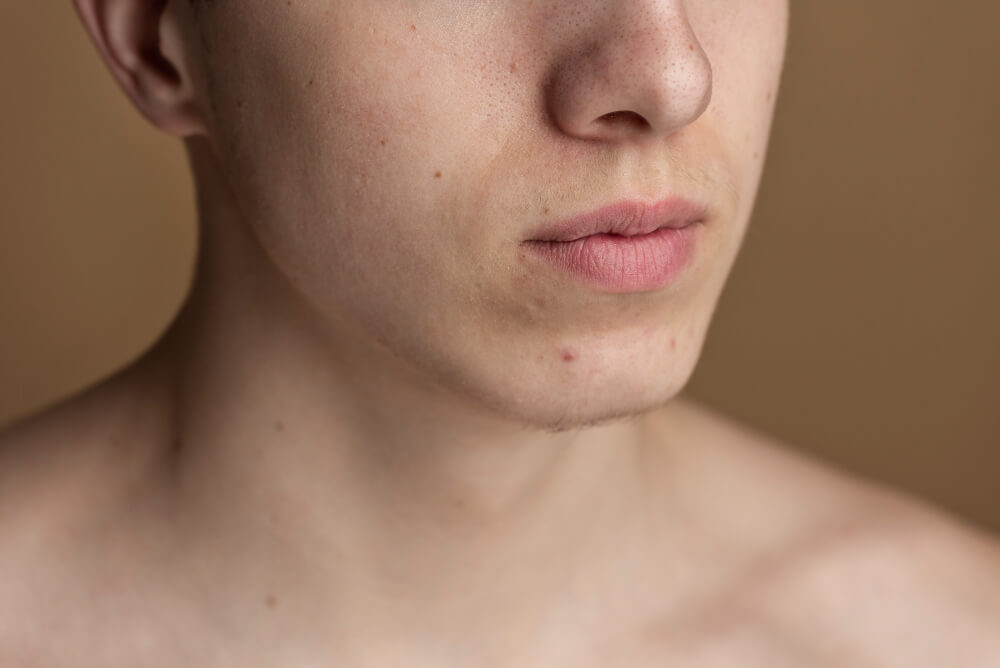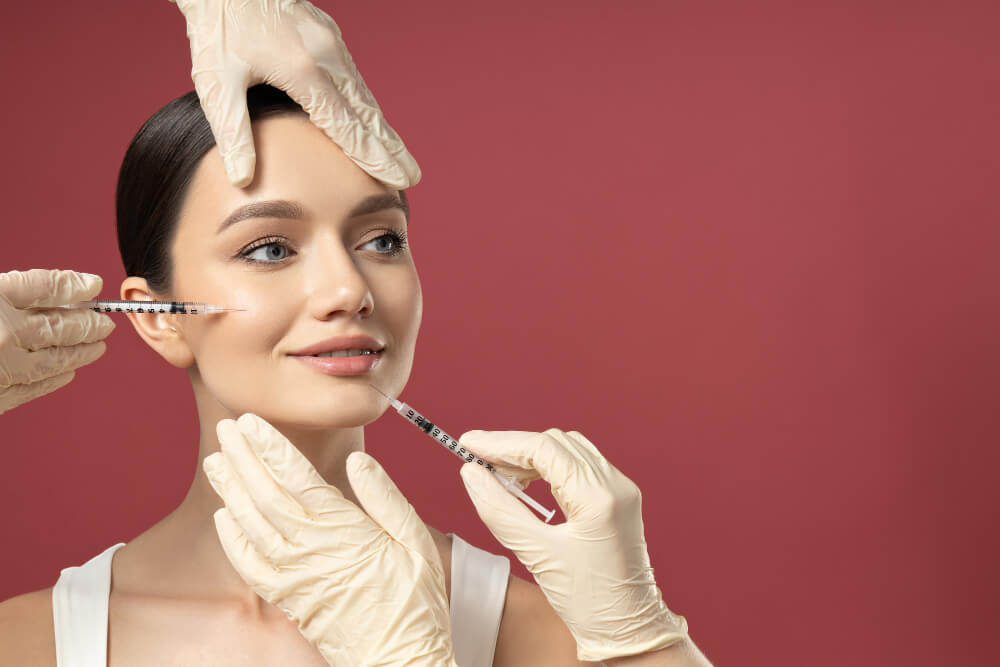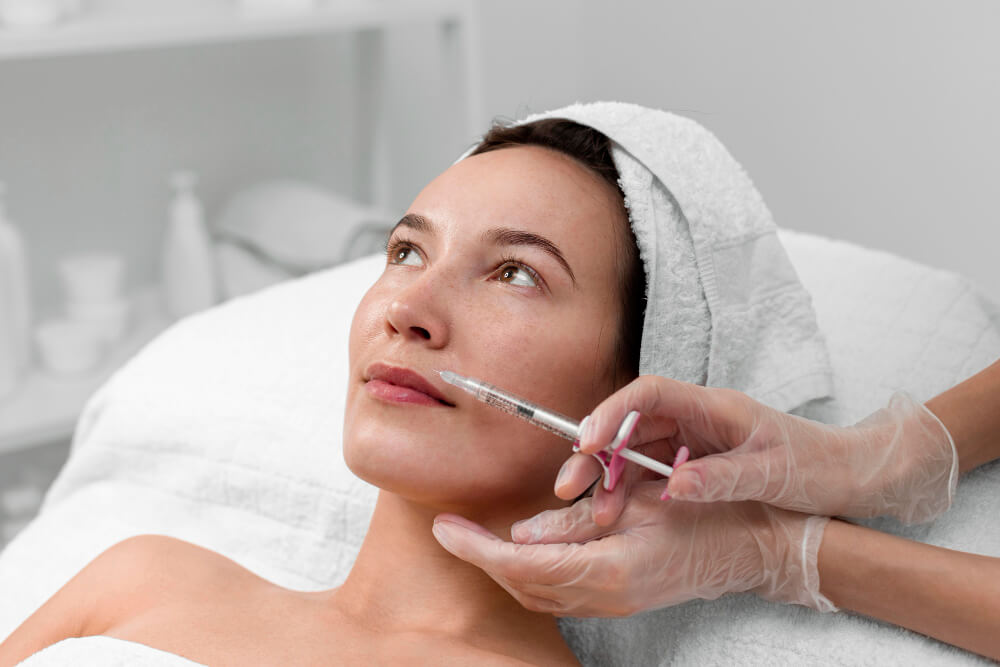
This post provides aesthetic professionals with strategies for managing and preventing these complications to ensure optimal patient outcomes.
Lumps forming after dermal fillers can occur due to improper injection technique, uneven filler distribution, or the body’s reaction to the filler material. These lumps can affect the aesthetic outcome and may require additional treatment, such as massage, hyaluronidase injections, or, in some cases, surgical removal. Consulting with an experienced practitioner minimizes the risk of lumps, ensuring smoother and more natural-looking results from dermal filler treatments.
If you find lumps or nodules, there are ways to fix them. It is also important to talk well with your patients and set clear expectations. After someone gets Sculptra, tell them how to care for their skin at home. Make sure they come back for check-ups so you can catch any issues early on. Learning from real cases helps us improve our ability to stop and treat Sculptra lumps for good patient results.
This article will explain the importance of aftercare for Sculptra lumps, which can sometimes happen after a Sculptra skin booster treatment. This will help professionals order Sculptra with more confidence.
Sculptra lumps can form after treatment and usually occur due to how the product is injected or if it isn’t mixed well enough. These bumps, or granulomas, may show up months later. Knowing this helps in dealing with them. Think of Sculptra as a safe material used in sutures, but sometimes it can lead to lumps forming.
To avoid these issues, don’t inject Sculptra too close to the skin surface, as this often leads to more problems like nodules and papules. Massaging the area after treatment can help ensure the product spreads evenly, reducing the risk of lump formation. This simple step plays a big part in keeping patients happy and preventing unwanted side effects from Sculptra treatments.

Sculptra lumps are small bumps or larger lumps that might appear under the skin after getting Sculptra treatments. These can show up as tiny, hard areas you can feel when you press on the treated parts of your body.
Sometimes, these lumps cause swelling and redness. The chances of them popping up change based on a few things, such as how your body reacts to Sculptra and whether the product was mixed and used just right.
Knowing what causes these bumps helps ensure patients are happy with their results. Moving forward, let’s examine why Sculptra lumps happen.
Lumps and bumps after Sculptra treatments can happen for a few reasons. Sometimes, they form because the product isn’t under the skin. This mistake can lead to small lumps you can feel or bigger ones that might even show.
If Sculptra is injected too close to the skin’s surface, it increases the chance for these not-so-nice surprises. The body works hard to break down Sculptra and use it to make new collagen—that helps your skin look better! But this process doesn’t always go smoothly. When things get off track, lumps might become an unwanted side effect.
Knowing the causes of Sculptra lumps helps us ensure they don’t hurt patient happiness and results. Patients feel better and see better outcomes when their skin looks good without bumps. Massaging the treated area can ensure Sculptra spreads out evenly, making patients happier with their looks. Proper injection methods also lower the chance of lumps forming, leading to greater satisfaction.
Choosing suitable patients is vital. Some people should not get Sculptra if they have lymphatic issues. This helps stop lumps before they start. Also, how you inject matters a lot; use suitable techniques to keep lumps away.
After treatment, tell your patients to stay out of the sun and avoid very hot or cold places. They should also massage the area as advised. These steps help prevent lumps and ensure everyone is happy with their results.
Patient assessment and selection are key steps for Sculptra injections. They help decide if this treatment is right for someone. Not everyone is a good fit. Doctors need to check the patient’s health history, skin condition, and expectations from the treatment.
This ensures patients know about possible risks and side effects.
Doctors also discuss how the injection works and how to care for the skin afterwards. This helps manage any lumps that might form later on. Ensuring patients understand these things leads to happier outcomes after treatment.
Use deep injections and avoid placing Sculptra where you normally put a filler. This helps prevent lumps. Injecting Sculptra requires careful technique. Warm the vials before using them to prevent the needle from clogging. Ensure the density suits how deep you are going with the injection to avoid lumps forming later.
Don’t do superficial shots since these can cause bumps and nodules that nobody wants. Each patient is different, so adjust how dense your mix is depending on where in the body you’re working.
After mastering proper injection techniques, the next critical step is handling Sculptra’s dilution and reconstitution process. This ensures a smooth mixture that decreases the chances of lumps or nodules forming under the skin.
You’ll need to mix Sculptra with bacteriostatic water—precisely, up to 8mL for each vial of sterile dry powder. The best practice is to prepare this blend more than 12 hours before you use it, which helps achieve a uniform consistency.
Remember that once mixed, you can use Sculptra immediately or store it at room temperature until needed. Sticking closely to these guidelines supports optimal results and goes a long way in maintaining patient safety and satisfaction.
After learning about the right ways to mix and use Sculptra, it is crucial to tackle any lumps that might appear. Dealing with these small bumps or larger nodules starts with knowing they can pop up after treatment. These lumps, whether seen or hidden under the skin, are often just piles of the product gathering together. Massaging the area well can break them down and spread the Sculptra more evenly. This helps get rid of lumps smoothly over time.
Doctors need to avoid putting Sculptra too close to the skin’s surface because that’s when problems like nodules tend to happen a lot more. If a lump does form, don’t worry — regular massages usually make them fade away gradually.
Finding and knowing what Sculptra lumps are is critical. Doctors must look at the lump’s size, location, and when it showed up after treatment. Early spots might just be swelling, but bumps showing up weeks or months later could be nodules from the Sculptra.
Using good lighting and touch, doctors determine if a lump is soft and goes away with pressure or if it’s hard. To diagnose these bumps right, asking patients about any pain or changes they’ve noticed helps too. Sometimes imaging tests like ultrasound help see things clearer. Knowing if it’s an average side effect or something more severe guides what to do next.

Learning from real-life cases helps us improve our prevention and management of Sculptra lumps. We’ve covered picking suitable patients, using the correct injection methods, and guiding them after treatment.
It’s all about keeping patients safe and happy with their results. Skills in handling these issues grow with each patient we see. Keeping up with best practices ensures everyone gets the best care possible.
Injection techniques paper
https://www.gla.ac.uk/media/Media_678206_smxx.pdf
Study regarding dermal filler complications
https://academic.oup.com/asj/article/31/1/110/273423
Join our newsletter to receive latest news and offers

Medicle MD Ltd
Reg. Number: 14317237
Address: 27 Old Gloucester Street,
WC1N 3AX London,
United Kingdom
Our website is intended solely for people who use medical devices, such as dermal fillers, as professionals. It may contain product advertisements targeted only at such people. To enter Nu Derma Supply, please confirm that you are such a person (e.g. a medical professional, cosmetologist, service technician, etc.).